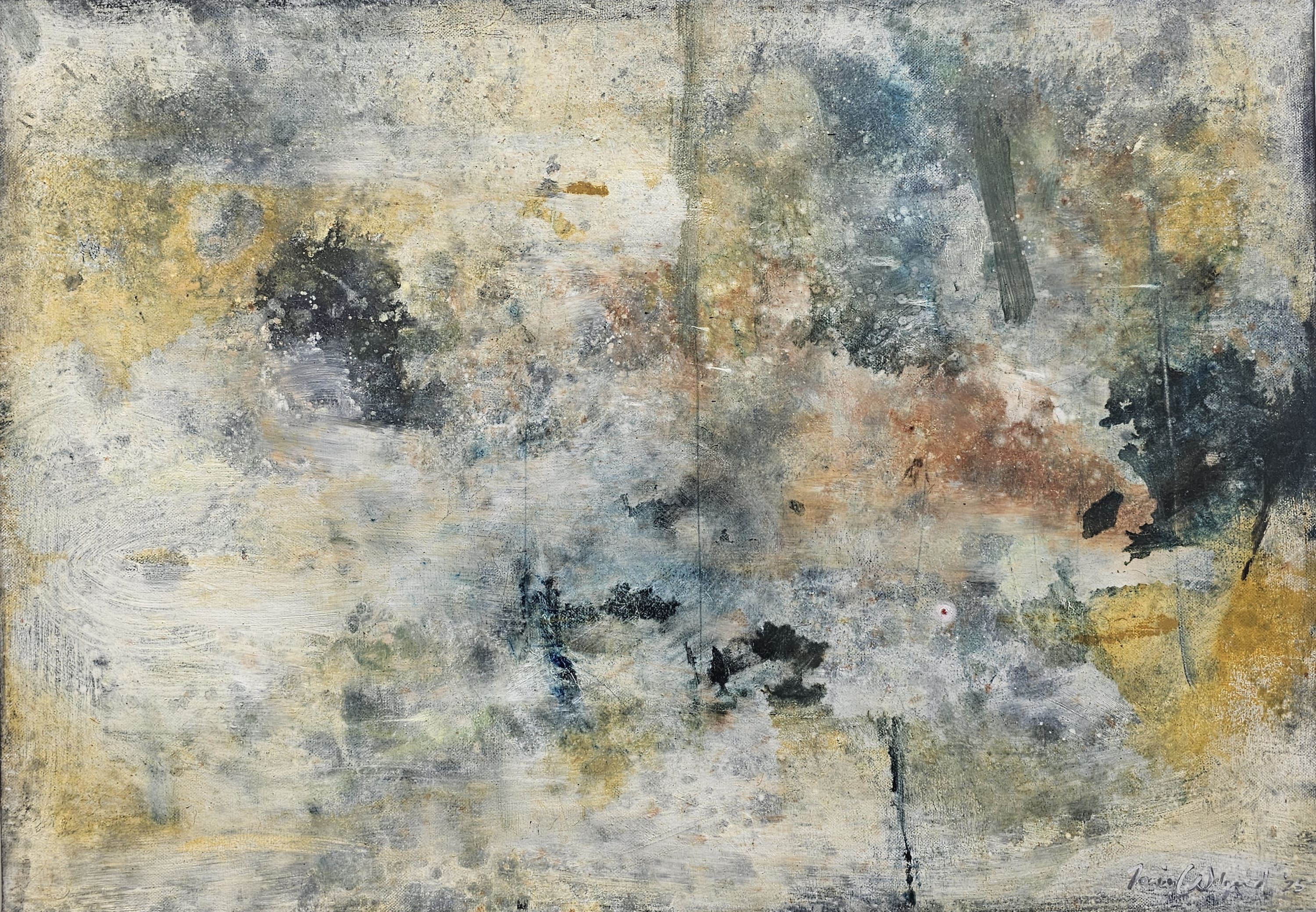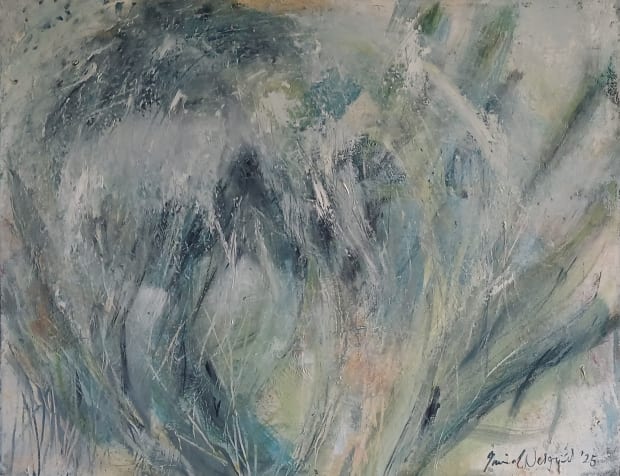-
-
Q: How would you describe the relationship between art and psychology?
A: Art and the process of making art is, I believe, very much a means to explore and process one's own, as well as others' psyche. Art lends a visual language to the issues one deals with. The questions one asks of oneself concerning the state of one's and others state of mind can be explored very effectively and in a process driven way.For the upcoming exhibition, Imprints of Elsewhere, the link between art and psychology in my work is a strong one. I deal with the inner landscape of my psyche and how I perceive certain issues in the world around me. Psychological processes using visual representation, for example the pomegranate in “Hidden agenda” and the line drawing of a caravan in “Terra/Terror”, become my means of telling a story. I give form to the thoughts and issues I grapple with, and possibly what others grapple with too. The whole idea of a physical landscape as a metaphor for a psychological landscape is what is evident in this exhibition. Mapping uncharted territory as well as recognising that which is familiar, can be seen as a reflection of the outer, as well as inner landscape.
I painted a self- portrait at a time when I was highly anxious. I had a very real experience of feeling incredibly small and lost in a vast physical as well as psychological landscape. I experienced the physical landscape as being totally impervious to my suffering. It stood separate and detached. The diptych called “Terra Incognito (1 & 2)” is a direct visual and abstract interpretation of feeling so small in a huge space. -
-
Q: Many of your paintings feature plants and flowers. Would you say that your artistic direction is inspired by nature?A: Yes, I am most definitely inspired by nature. I feel Nature is the evidence of original and divine creation, from which many so-called ‘original’ ideas flow. Nature inspires me by forms. I do think spirituality is influential in my interpretation of, and interaction with, the world I live in. Nature inspires me by forms, systems, colours and its mystery.
-
Q: Would you say that you have an intuitive art process?
A: I often would wake up with an idea that pops into my head, which is quite interesting as it seems to have come out of nowhere. I would almost have a physical response to the way one form relates to another and just the negative space. I feel it inside myself. So when I work, I feel what I am painting; I am not planning it in my mind - rather as I go along, I work. I suppose for me then, that would be an intuitive response.Later on, I think about magic realism and for me, it has that kind of feel to it, but maybe less outlandish. In magic realism there are these conversations between seemingly unrelated things and for me it is like a conversation but it is nothing that I have controlled by my intellect - it is definitely my response to how colours and forms work together. Then just out of nowhere I would hear the lyrics of a song and that gets the creative juices flowing, and especially always taking photographs. So it is small amazing little details that you find as inspiration that gets your mind going. Possibly part of the series that I am doing for this upcoming Imprints of Elsewhere exhibition is being awake at night and what you see at night as opposed to the day time. That becomes really unexpected. That is another thing, you find these unexpected moments of beauty that you could never have planned. That is how I would describe an instinctive approach. -

-

-
Q: The titles of your work, such as “Soulful Walker”, “We are Stardust”, “Fire Maiden”, seem to suggest elements of a certain spirituality or mythology in your artworks. Would you say this interpretation is correct and if so, can you please elaborate on it.A: I see spirituality having much more of a guiding force in day to day life than we often realise. I use titles such as “We are Stardust” (which I borrowed from song lyrics) and “Fire Maiden”, to suggest that there is something more mysterious and beyond our perception, at work. Naming seemingly ordinary subjects with these titles, I believe, opens the viewers to the idea of the Divine presence and blessing in everything. -
Q: In some of your artworks, you include animals, like birds, frogs and dogs. Can you say why you have chosen to depict animals as opposed to people?A: I am not aware that I consciously refrain from painting people. The fauna and flora, especially of South Africa, are perhaps more obviously quirky in their shapes, forms and colours. I think they are beautiful and capture my imagination.






